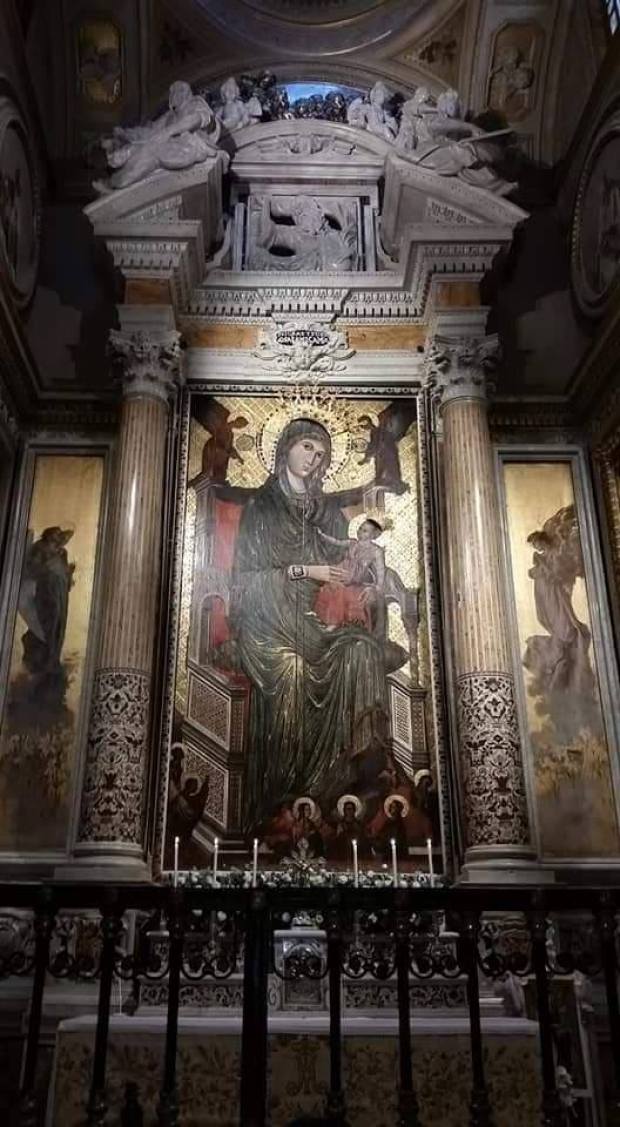Lenten Campaign 2025
This content is free of charge, as are all our articles.
Support us with a donation that is tax-deductible and enable us to continue to reach millions of readers.
The Abbey of Montevergine is a territorial abbey in the commune of Montevergine, in the ecclesiastical province of Benevento (Italy). A territorial abbey is a designated monastery governing a specific geographic region that falls outside the purview of any diocese, led by an abbot (or superior or prior) who serves as the ordinary for all Catholics and parishes within that territory.
The name itself, Montevergine, can be translated as “the Virgin’s mountain.” However, that was not always the case. When St. William of Vercelli founded the first hermitage on the mountain in 1124, it was known simply as Mons Sacer.
A lot of times, places deemed holy have been considered as such for centuries, even before the arrival of Christianity. The wells of St. Patrick in Ireland, for example, were already ritually used by pagans before Patrick turned them into baptism sites. Tradition claims a temple of Cybele once stood there – as in the case of the famed Roman basilica of Santa Maria Sopra Minerva, and many others.
The Legenda de vita et obitu sancti Guilielmi Confessoris et heremitae, written in the first half of the 13th century, is the best way to get to know St. William – and, thus, the history of the abbey. Very much à la St. Francis of Assisi, the most famous miracle associated with William is the miracle of the wolf. Hagiography claims that one day a wolf attacked and killed a donkey that the saint relied on for various tasks. The saint then told the wolf to do all the work that the donkey had done. Miraculously, the once wild creature was transformed into a docile one. Consequently, St. William is often depicted with a “tamed” wolf.

Born in 1085 to a noble family in Vercelli, Italy, William witnessed the death of his parents and was raised by a relative. After a pilgrimage to Santiago de Compostela, he intended to travel to Jerusalem. As he was on his way there, he was attacked and robbed in southern Italy. The saint interpreted the incident as a divine sign to remain in the region. He chose to settle on Monte Vergine, where he lived as a hermit. There, he attracted a number of followers and founded the monastery.
Under the patronage of Roger II of Sicily, William founded numerous monasteries in Sicily – a branch of the Benedictines, the Williamites, grew out of these foundations. However (as often happens), conflicts arose among his followers, causing him to leave Montevergine in 1128 and found a new monastery in Goleto, where he would die on June 25, 1142. His remains were later transferred to Montevergine in 1807.
Over the centuries, Montevergine Abbey has stood as a testament to William’s vision, becoming a treasured pilgrimage site. The abbey’s basilica houses a revered statue of the Madonna of Montevergine, affectionately known as La Madonna Nera, “The Black Madonna,” a miraculous image that draws pilgrims from all over Italy – and beyond.










